Wangdaebak Jijimichon (왕대박지지미촌)
3.7Km 2021-03-29
62-1, Toegye-ro, Jung-gu, Seoul
+82-2-752-3337
A great store to visit on a rainy day. This Korean dishes restaurant is located in Jung-gu, Seoul. The representative menu is three-colored pancake.
Gangseo Myeonok (강서면옥)
3.7Km 2020-04-17
35, Sejong-daero 11-gil, Jung-gu, Seoul
+82-2-752-1945
Gangseo Myeonok has been famous for over fifty years, having been the food of choice served to visiting dignitaries from North Korea at the time of the South-North Red Cross Conference. The restaurant has succeeded in carrying on the tradition of Pyeongyang-style naengmyeon. The native buckwheat from Gangwon-do mixed with starch makes for fine noodles, and the wonderful broth is made from beef brisket with white radish kimchi.
Namdaemun Market Mungu (Stationery) Street (남대문 문구상가)
3.7Km 2025-05-13
6-2, Namdaemun-ro, Jung-gu, Seoul
Honam Sikdang (호남식당)
3.7Km 2021-03-22
18-6, Namdaemunsijang-gil, Jung-gu, Seoul
+82-2-775-5033
A restaurant frequently featured in Korean gourmet programs. A braised cutlassfish specialty restaurant is located near namdaemun market, Seoul. The representative menu is braised cutlassfish.
Mercado Namdaemun (남대문시장)
3.8Km 2024-05-17
Namdaemunsijang 4-gil 21, Jung-gu, Seúl
Mirakjeong (미락정)
3.8Km 2021-03-30
52, Sejong-daero 9-gil, Jung-gu, Seoul
+82-2-778-7210
It is a place where pork cutlet is made directly with domestic pork. This restaurant's signature menu is house-made jumbo sized pork cutlet. This Korean dishes restaurant is located in Jung-gu, Seoul.
Seomun Hoegwan(서문회관)
3.8Km 2021-03-18
47, Sejong-daero, 11-gil, Jung-gu, Seoul
+82-2-755-0897
A bulgogi specialty restaurant located near City Hall Station in Seoul. The most famous menu is Korean beef bulgogi. Experience bulgogi, a Korean traditional dish.
Tumbas Yeonghwiwon y Sunginwon (서울 영휘원(순헌황귀비)과 숭인원(이진))
3.8Km 2022-07-15
Heungneung-ro 90, Dongdaemun-gu, Seúl.
Dentro de Yeonghwiwon se encuentra la tumba de la dama Sunheongwibi Eom, concubina del emperador Gojong y madre del príncipe Yeongchinwang. Actualmente la tablilla de la dama Eom se encuentra en el santuario Chilgung de Gungjeong-dong, en Jongno-gu. Yeonghwiwon antiguamente era el lugar de la tumba de la emperatriz Myeongseong Hwanghu, pero esta fue trasladada hacia Hongyuneung para guardar sepultura junto con el emperador Gojong en 1919.
Hillhouse Hotel / 힐하우스 호텔
3.8Km 2025-03-18
42, Sogong-ro 3-gil, Jung-gu, Seoul
+82-10-5207-0580
Hill House Hotel is a business hotel located at the foot of Mt. Namsan Park in Seoul. The hotel opened in 2006 with 40 rooms in all. There are various types of rooms including double room, twin room, deluxe twin room, and suite room. The hotel is earning raves for the neat and clean condition of its rooms. In particular, the hotel is ideal for travelers who prefer quiet accommodations since it is located in a residential area.
The room offers various amenities. Free Internet is available in all rooms, and a notebook PC is available for use at the communal space in the lobby. Complimentary breakfast of toast, coffee, cereal, etc. is offered. There is a communal microwave in the cafeteria, too. A baggage counter is also available for customers’ convenience.
The hotel offers easy access to public transportation, being located near Subway Hoehyeon Station, Seoul Station, and Myeongdong Station. You can visit Namsan Seoul Tower, Namdaemun Market, etc. on foot. Myeongdong is a mere 10-minute walk from Namdaemun Market. With large department stores and duty-free shops, Myeongdong is a hot place for foreign travelers. The hotel is also near Cheonggyecheon, so it is recommended to travelers who want to enjoy a tour of downtown Seoul.
Puerta Sungnyemun (Puerta Namdaemun) (숭례문)
3.8Km 2025-05-23
Sejong-daero 40, Jung-gu, Seúl
La puerta Namdaemun, cuyo nombre oficial es Sungnyemun, es un Tesoro Nacional de Corea. Tiene una entrada con forma de arco en el centro de una plataforma levantada de piedras. Sobre la misma, se elevan los pilares y el techo dividiendo al portal en nivel superior e inferior. En los laterales Este y Oeste, tiene abiertas puertas para entrar y salir.
El césped verde que rodea a la plataforma muestra las huellas de una antigua fortaleza. Cuando el monarca fundador de la dinastía Joseon, Lee Seong-Gye (que reinó de 1335 a 1408), hizo construir la ciudad capital, creía que en caso de incendio, el fuego alcanzaría el palacio Gyeongbokgung como así también el interior de la capital porque el monte Gwanaksan de Seúl tiene la figura del fuego de acuerdo a los principios de geománticos del “feng-shui”. Por ello, el letrero de la puerta Sungnyemun fue escrito en sentido vertical para proteger a la ciudad del incendio, porque los caracteres chinos escritos en forma horizontal se semejan a la imagen del fuego. La ideografía del letrero de Sungnyemun es solemne, elegante y llena de fuerza, pero a la vez, prolija.
La ideografía es famosa por ser de puño y letra del príncipe Yangnyeongdaegun (que reinó de 1394 a 1462), el primogénito de Taejong (1367-1422) de la dinastía Joseon. Por las noches, las luces de las lámparas de mercurio ubicadas debajo de la puerta añaden más belleza a su estética natural.
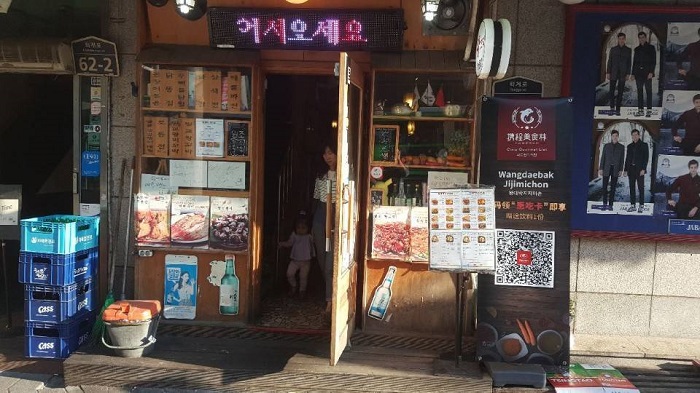

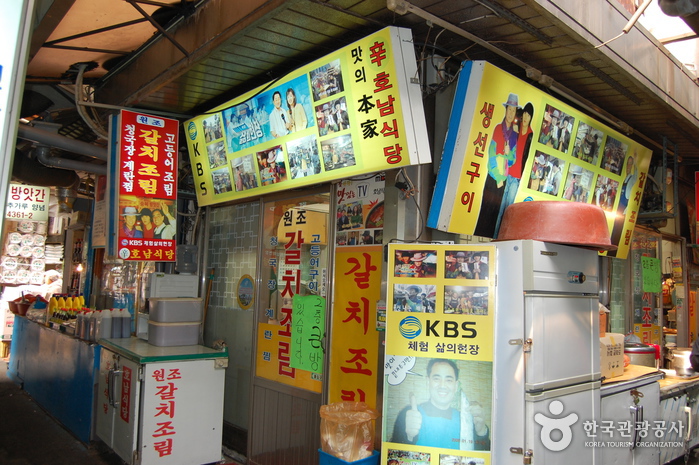
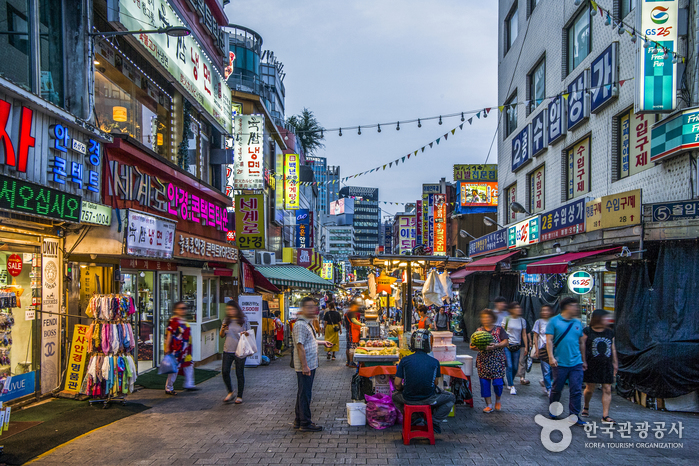
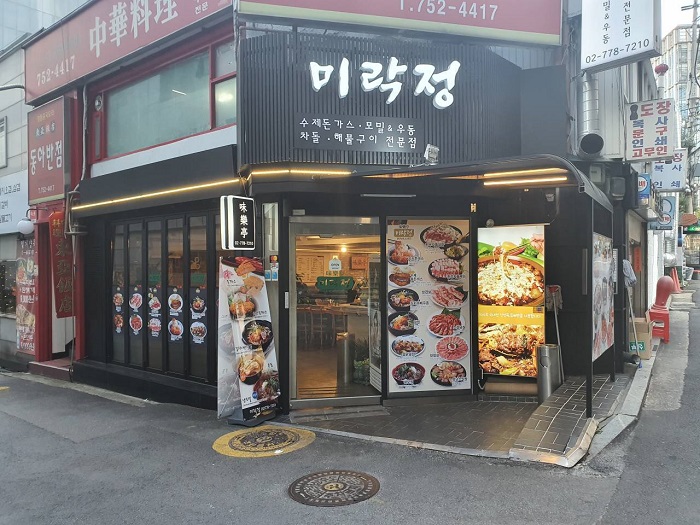
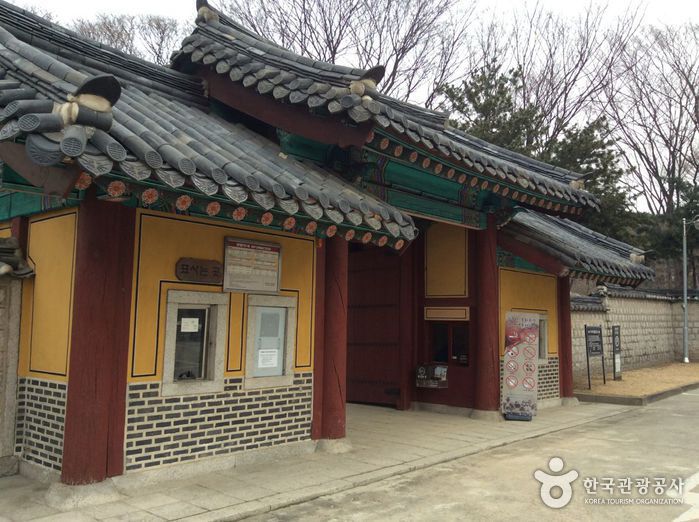
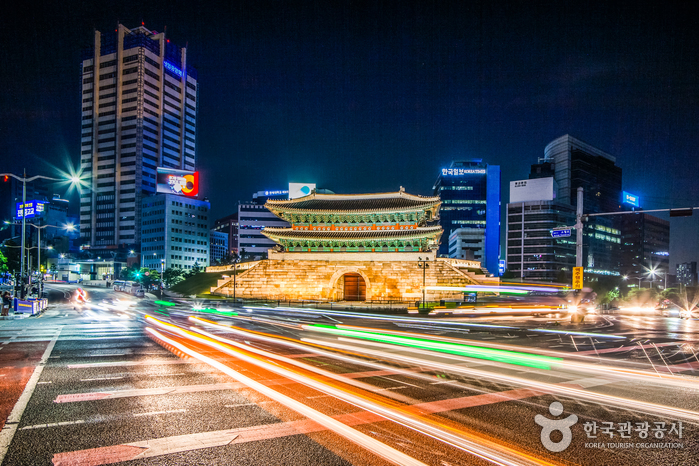
 Español
Español
 한국어
한국어 English
English 日本語
日本語 中文(简体)
中文(简体) Deutsch
Deutsch Français
Français Русский
Русский